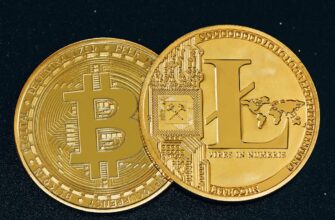## Introduction: What is Ethereum?
Ethereum is a decentralized, open-source blockchain platform that revolutionized digital technology by introducing smart contract functionality. Unlike Bitcoin, which primarily serves as digital money, Ethereum acts as a “world computer” enabling developers to build decentralized applications (dApps) without intermediaries. Founded by Vitalik Buterin in 2015, Ethereum has grown into the second-largest cryptocurrency by market cap, powering innovations like DeFi, NFTs, and Web3 infrastructure. This guide explores Ethereum’s core concepts, technology, and real-world impact.
## The Core Technology Behind Ethereum
Ethereum operates on blockchain technology – a distributed ledger maintained by a global network of computers (nodes). Key components include:
– **Smart Contracts**: Self-executing code that automates agreements (e.g., releasing funds when conditions are met).
– **Ether (ETH)**: Ethereum’s native cryptocurrency used for transaction fees and network security.
– **Ethereum Virtual Machine (EVM)**: A runtime environment that executes smart contracts across all nodes.
– **Consensus Mechanism**: Transitioned from energy-intensive Proof-of-Work (PoW) to eco-friendly Proof-of-Stake (PoS) in 2022.
## Ethereum vs. Bitcoin: Fundamental Differences
While both are cryptocurrencies, Ethereum and Bitcoin serve distinct purposes:
1. **Purpose**: Bitcoin is digital gold/store of value; Ethereum is a programmable platform for dApps.
2. **Transaction Speed**: Ethereum processes transactions in ~15 seconds vs. Bitcoin’s 10 minutes.
3. **Supply**: Bitcoin has a fixed 21 million supply cap; Ethereum has no hard cap but reduced issuance post-merge.
4. **Functionality**: Ethereum supports complex logic via smart contracts; Bitcoin has limited scripting.
## Real-World Applications of Ethereum
Ethereum’s flexibility enables transformative use cases:
– **DeFi (Decentralized Finance)**: Platforms like Uniswap and Aave enable lending, trading, and earning interest without banks.
– **NFTs (Non-Fungible Tokens)**: Unique digital assets representing art, collectibles, and virtual real estate.
– **DAOs (Decentralized Autonomous Organizations)**: Member-owned communities governed by smart contracts.
– **Supply Chain Tracking**: Transparent product journey verification from source to consumer.
## Ethereum 2.0: The Scalability Revolution
The 2022 “Merge” upgraded Ethereum to Proof-of-Stake, addressing key challenges:
– **Energy Efficiency**: Reduced power consumption by 99.95%.
– **Scalability**: Layer-2 solutions (e.g., Polygon, Arbitrum) handle transactions off-chain for lower fees.
– **Security**: Staking requires validators to lock ETH, disincentivizing malicious acts.
– **Future Upgrades**: Sharding (splitting the network into smaller chains) will further boost capacity.
## How to Buy and Store Ethereum Safely
### Buying ETH:
1. Sign up on regulated exchanges (Coinbase, Kraken, Binance)
2. Complete identity verification
3. Deposit fiat currency via bank transfer or card
4. Purchase ETH at market or limit price
### Storage Options:
– **Hardware Wallets** (Ledger, Trezor): Most secure offline storage.
– **Software Wallets** (MetaMask, Exodus): Convenient for frequent transactions.
– **Exchange Wallets**: Suitable for beginners but less secure than self-custody.
## Risks and Challenges Facing Ethereum
Despite its potential, Ethereum faces hurdles:
– **Gas Fees**: Network congestion can spike transaction costs.
– **Regulatory Uncertainty**: Evolving global crypto regulations create compliance complexities.
– **Competition**: Rivals like Solana and Cardano offer faster/cheaper alternatives.
– **Security Vulnerabilities**: Smart contract bugs have led to high-profile hacks (e.g., The DAO incident).
## Frequently Asked Questions (FAQ)
### Is Ethereum a cryptocurrency?
Yes, Ether (ETH) is Ethereum’s native cryptocurrency used to pay for transactions and computational services. However, Ethereum itself is primarily a platform for building decentralized applications.
### How is Ethereum different from Bitcoin?
Bitcoin is designed as digital cash, while Ethereum is a programmable blockchain supporting smart contracts and dApps. Ethereum also uses Proof-of-Stake consensus, making it faster and more energy-efficient than Bitcoin’s Proof-of-Work.
### Can Ethereum be converted to cash?
Absolutely. You can sell ETH on cryptocurrency exchanges like Coinbase or Kraken, then withdraw funds to your bank account. Peer-to-peer platforms and crypto ATMs also offer conversion options.
### What gives Ethereum value?
Ethereum’s value stems from:
– Utility as “gas” for network operations
– Demand for DeFi, NFT, and dApp services
– Scarcity through token burning mechanisms
– Speculation on future adoption
### Is Ethereum mining still profitable?
Since the Merge in 2022, Ethereum no longer uses mining. Instead, users earn rewards by “staking” ETH to validate transactions. Staking yields typically range from 3-5% annually.
## Conclusion: The Future of Ethereum
Ethereum has evolved from a concept to the backbone of Web3, hosting over 4,400 dApps and $50B+ in DeFi assets. With ongoing upgrades improving scalability and sustainability, Ethereum aims to become the foundation for a decentralized internet. While challenges remain, its blend of security, developer community, and real-world utility positions Ethereum as a transformative force in finance, technology, and digital ownership.








